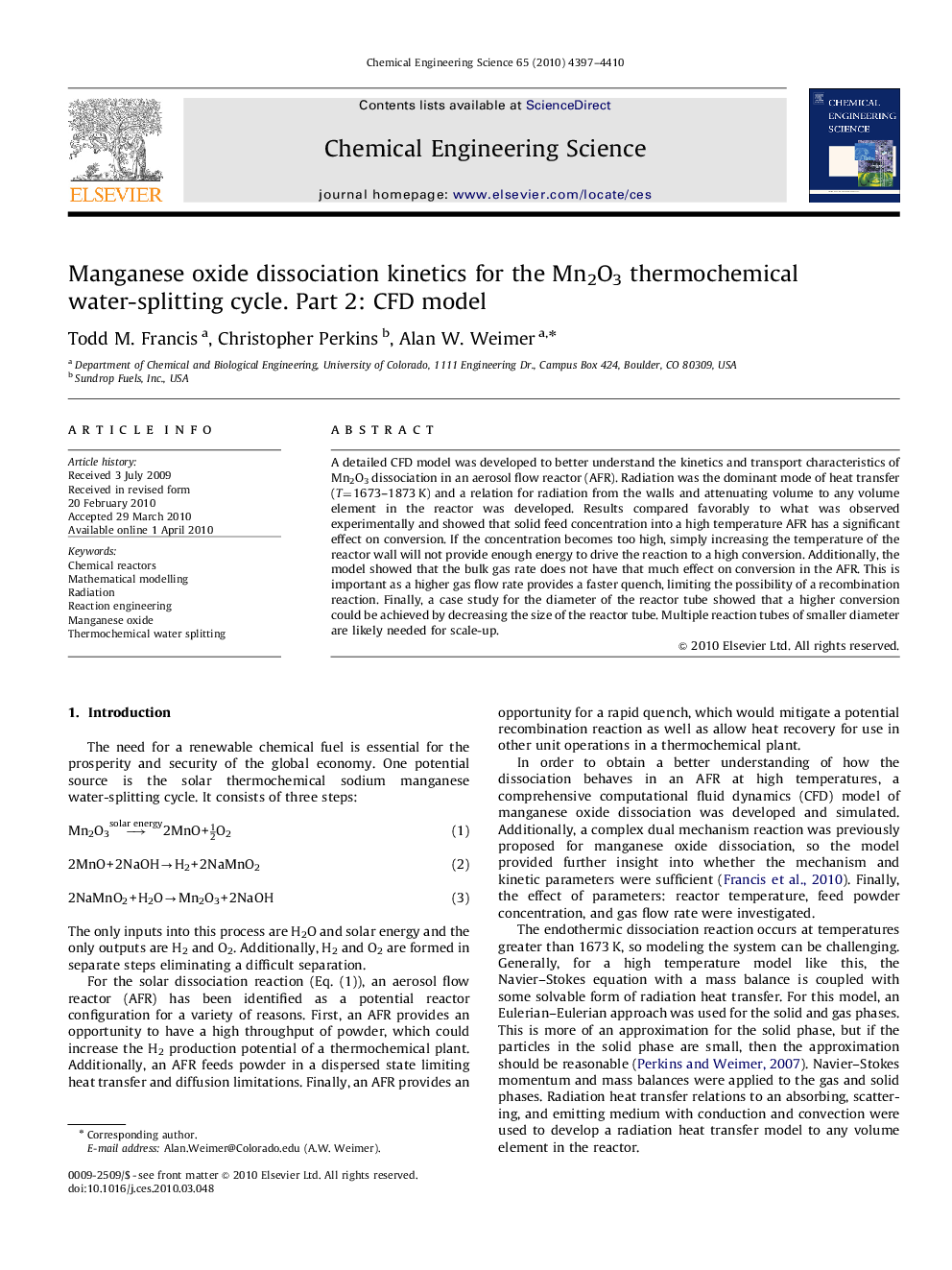| کد مقاله | کد نشریه | سال انتشار | مقاله انگلیسی | نسخه تمام متن |
|---|---|---|---|---|
| 156758 | 456946 | 2010 | 14 صفحه PDF | دانلود رایگان |

A detailed CFD model was developed to better understand the kinetics and transport characteristics of Mn2O3 dissociation in an aerosol flow reactor (AFR). Radiation was the dominant mode of heat transfer (T=1673–1873 K) and a relation for radiation from the walls and attenuating volume to any volume element in the reactor was developed. Results compared favorably to what was observed experimentally and showed that solid feed concentration into a high temperature AFR has a significant effect on conversion. If the concentration becomes too high, simply increasing the temperature of the reactor wall will not provide enough energy to drive the reaction to a high conversion. Additionally, the model showed that the bulk gas rate does not have that much effect on conversion in the AFR. This is important as a higher gas flow rate provides a faster quench, limiting the possibility of a recombination reaction. Finally, a case study for the diameter of the reactor tube showed that a higher conversion could be achieved by decreasing the size of the reactor tube. Multiple reaction tubes of smaller diameter are likely needed for scale-up.
Journal: Chemical Engineering Science - Volume 65, Issue 15, 1 August 2010, Pages 4397–4410